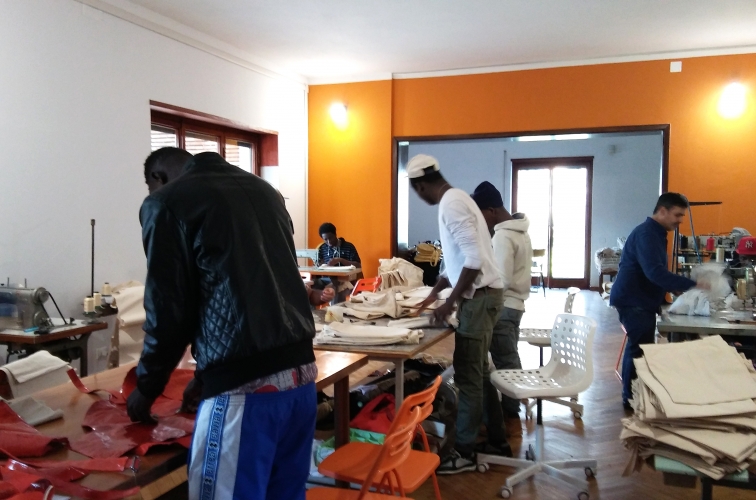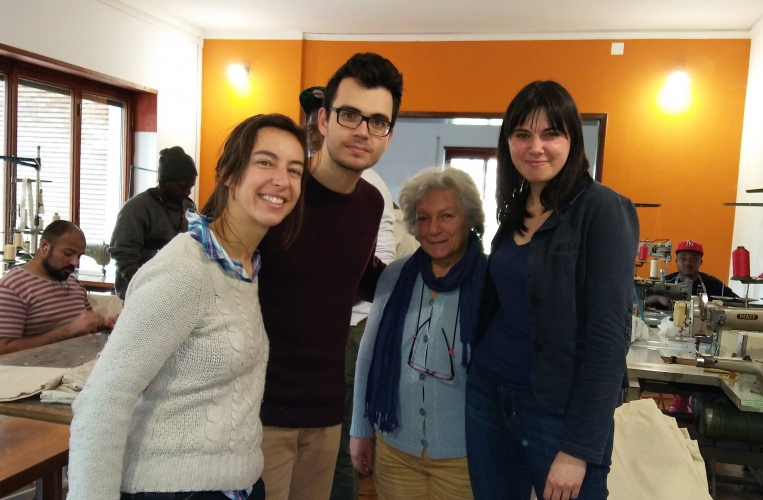“Instead of asking people to come to us, we go with our participants to places where everyday life is happening,” said Elisabetta Degli Esposti Merli from Lai-momo speaking at the EAEA policy debate in 2016. While adult education and refugees was the EAEA theme last year, in 2017 EAEA is looking at the lessons learnt since then.
A few months ago, EAEA visited the offices of Lai-momo and its new reception facility for asylum seekers to learn more about how adult education can contribute to the inclusion of refugees at the local level.
Intercultural communication has been the main topic of interest for Lai-momo since its foundation in 1995. Following the sharp increase in migration to Italy a few years ago, the organisation has expanded the everyday work to social services, and ultimately management of reception facilities.
“In 2011, with the first flow of asylum seekers, Lai-momo opened its field of action to managing reception facilities, as it already had a solid experience in providing services empowering migrant communities present in the area”, says Flore Thoreau La Salle, Project Manager at Africa e Mediterraneo, a partner organisation of Lai-momo.
The reception facilities run by Lai-momo have a unique feature.
“In Italy there are a lot of reception centres that are quite big, hosting 40-50 people or even 700-1000. Bologna and the Emilia Romagna region decided to open small reception centres, and right now the great majority of Italian regions started to work similarly,” says Miriam Salussolia, Project Coordinator at Lai-momo.
For example, the new reception centre in Lama di Reno that EAEA visited hosts only 18 asylum seekers. “This allows them not to lose their independence. In very big reception centres, someone else is cooking, someone else is doing the daily cleaning… They don’t have the possibility to have a normal life. Here, they have a chance to discover what daily life is like in Italy,” explains Miriam.
The first of a kind
The new reception centre is also the first one that also serves as a training centre. It was opened in July 2016 and offers a regular sewing and leather goods making course, and more.
“We’re providing several activities, as required by the Agreement signed with the Prefettura of Bologna: for instance, we provide Italian classes, we’re supporting people from a legal point of view in asking for asylum, in entering the Italian labour market and in doing voluntary work in their communities,” lists Miriam.
The centre works in cooperation with the Ethical Fashion Initiative, now a flagship programme of the International Trade Centre. The initiative started as a small project in Kenya in 2009, encouraging international fashion designers to produce there and offer fair working conditions. It has now spread over to other countries, with cooperatives springing up in Burkina Faso, Ethiopia, Mali, as well as Haiti and Papua New Guinea.
“The main idea is to support the participants either in entering the labour market in Italy, or in joining the Ethical Fashion Initiative in their country, if they decide on the voluntary assisted return programme,” says Miriam, who’s in charge of the initiative at Lai-momo. “So we’re talking about both integration at the local level, and the possibility to return to the country of origin.”
Living in limbo
At the same time, Miriam admits that few asylum seekers actually consider coming back to their countries.
“It’s quite difficult to talk to them about voluntary return – they’ve spent so much time in trying to reach Italy, and they really hope to have the possibility to stay.”
“The problem is that processing the asylum request takes really long – even two and a half years. Asylum seekers spend this time in Italy in a sort of limbo – they don’t know what will happen to them, if they finally will get the documents or not. Talking about the future and planning anything with them is really complicated. They had all left their families, their countries of origin, crossed many countries for weeks or months, and sometimes they’re very vulnerable from a psychological point of view. Their families invested in them hoping they could change their family lives. But in the end, only 40% of asylum seekers get a positive answer.”

Working with the community: beyond tolerance
It goes without saying that integration is a two-way street, and requires commitment also of the local population.
“We’re working a lot on awareness raising with the receiving community. We’re doing a lot of intercultural workshops in schools, and we’ve also started Welcoming Bologna, which is a community development approach. We’re trying to develop a network of stakeholders and reflect together on how to create a more welcoming community,” says Flore.
“We just did a capacity building seminar to exchange best practices. We also organised a multi-disciplinary summer school in Bologna on migration and asylum, from the point of view of the countries of origin, to describe the journey, the legal aspects and communication.”
Listen to Flore talking about the Welcoming Bologna project.
Non-formal learning plays an important part. “We try to collaborate with local associations, for example the local photography association, the local sports centre, we had a musician who did a workshop. One asylum seeker from the area participated in a radio show and chose the music for the day,” says Flore.
“Last year before Christmas holidays we opened the centre to the local community for a small party,” adds Miriam. Maria Messina, who manages the centre, gives yet another example: “Some families have opened their homes and invited the asylum seekers to cook together. We then produced a brochure with recipes,” she says.
“The idea is that the community is not just tolerant, but actively welcoming migrants,” concludes Flore.
More information
- Visit the website of Lai-momo
- Contact progetti(a)laimomo.it or Flore Thoreau La Sall for more information
- See also EAEA’s policy messages on adult education and refugees.
Text: Aleksandra KozyraPhotos: Aleksandra Kozyra, Lai-momo

